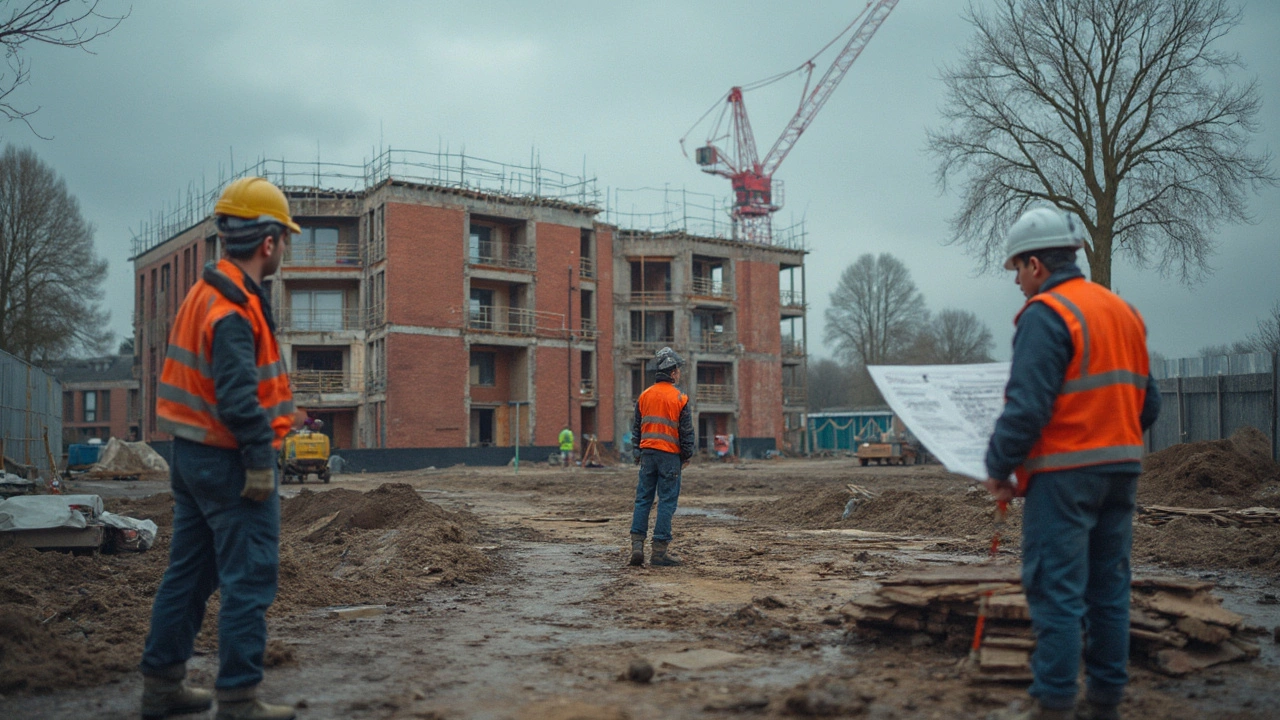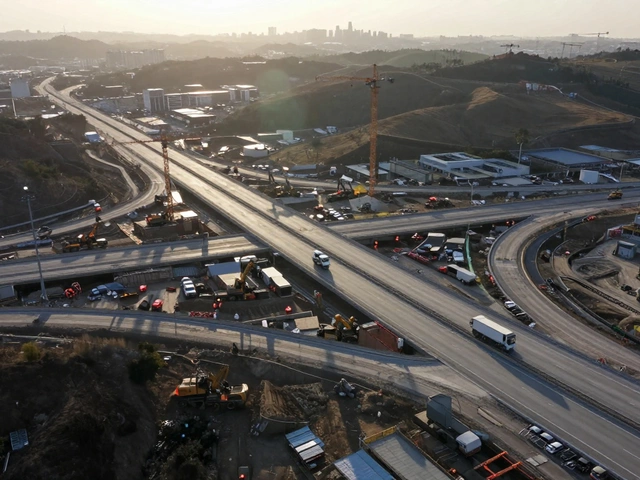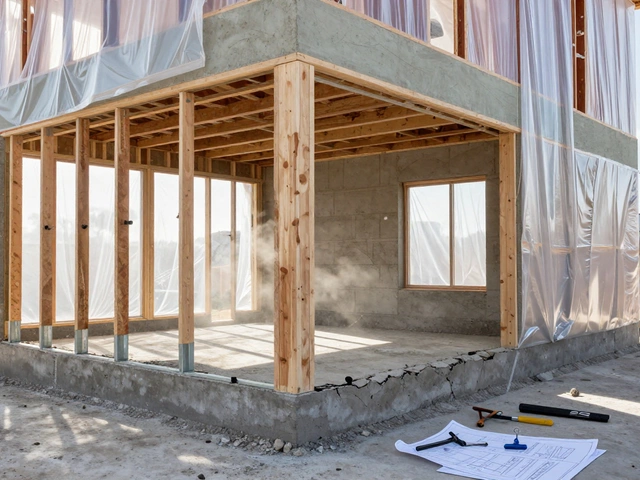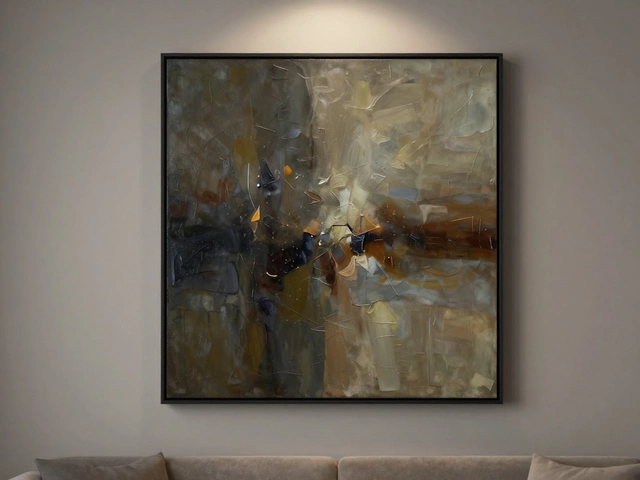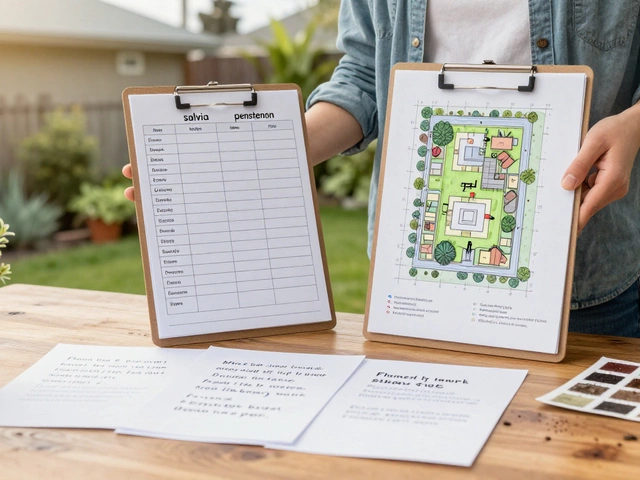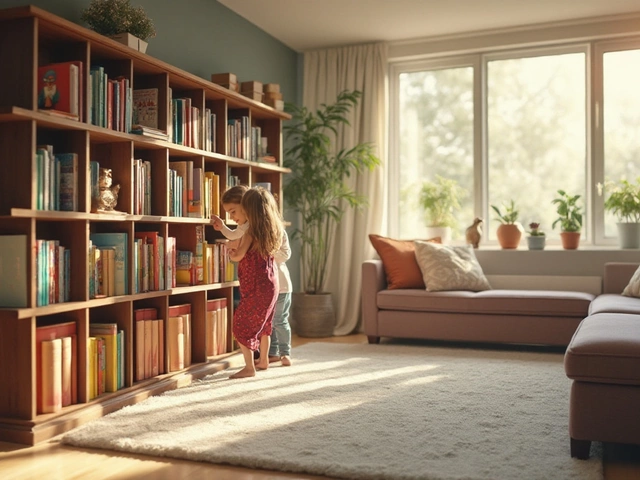Getting a new home is exciting, but what if things aren’t as perfect as they seem? If you’re thinking of buying or building a new place, beware—there could be some sneaky defects that pop up later. Nobody wants to deal with that headache, right?
So, what should you keep an eye on? Let’s start with the foundation. It’s great if your house looks stunning from the outside, but without a solid foundation, you might be in for a world of problems—literally. Cracks or uneven settling can spell disaster over time. Your builder should keep an eye on this, but make sure you do too!
Another biggie is the roof. A leaky roof can rain on your parade for sure. Look for poorly installed shingles or gutters that don’t quite do their job. It’s not glamorous, but hey, the roof over your head should do its job, right?
- Foundation Flaws
- Roofing Issues
- Plumbing Problems
- Electrical Faults
- Poor Insulation
- Window and Door Fitting
Foundation Flaws
When it comes to building defects, foundation flaws top the list of potential nightmares. Imagine having a beautiful new home, but discovering that the very base it's built on might not hold up. Not fun, right? These flaws often appear in the form of cracks, which might seem harmless at first, but can signal bigger issues down the road.
So, what's the deal with these cracks? Well, they often come from soil movement or poor construction processes. If the soil underneath wasn't properly compacted or if there's excessive moisture, you're asking for trouble. Foundation cracks can lead to uneven floors and even gaps in doors and windows.
Here are some tell-tale signs you should look for:
- Cracks that are wider than a quarter inch
- Doors that jam or won't latch properly
- Gaps between the floor and walls
- Floors that are uneven or sagging
The good news? You can catch these things early. Routine inspections by a professional can save you loads of cash and heartache later on. It’s all about investing a little now to avoid big problems later.
To give you an idea of how crucial foundation integrity is, here's a quick look at what poor foundations can cost you:
| Type of Repair | Approximate Cost |
|---|---|
| Minor Crack Repair | $500 - $1,000 |
| Major Foundation Work | $5,000 - $15,000+ |
| Full Foundation Replacement | $20,000 - $100,000 |
The bottom line? When you’re dealing with new buildings, take your time to examine everything closely. Foundation flaws are nothing to mess with, and catching them early can keep your dream home intact for years to come.
Roofing Issues
Dealing with roofing issues isn’t just a rainy day problem—it's more common than you might think in new builds. So why do these roofs act up so soon? Most times, it boils down to installation errors, and that's something you want to catch early on.
Here's a scary fact: improper shingle installation and flashing are among the top causes of early roof leaks. When shingles aren’t laid right, or the flashing (that’s the metal or plastic sealing around edges and joints) isn't fitted properly, water finds a way in.
"A roof isn't just shingles and tar paper—it's a system working together to protect your home," says John Matthews, a seasoned roofing contractor with over 20 years of experience.
Some roofs go through what's called 'premature aging.' This happens when subpar materials are used or when things aren't sealed properly. We all know a roof should last decades, not just a few years. Maintenance becomes a breeze if you start on the right foot.
Here are steps to spot potential roofing problems early:
- Inspect for any missing shingles or visible signs of wear, especially after heavy rain or high winds.
- Check the attic for any traces of water stains or mold, which signal potential roof leaks.
- Ensure your gutters are clear, and water is flowing away, not pooling near the foundation. Clogged gutters can lead to water backing up under the roof.
- Get a professional roof inspection periodically. A seasoned pro can spot things that might go unnoticed.
If you’re still building, talk to your builder about the materials. Ask if they're certified and whether they have a warranty. You'll sleep better knowing your roof is as dependable as a good umbrella in a storm.
Remember, when it rains, you don't want it pouring inside your new dream home. Stay proactive—keeping your home dry is worth the bit of extra effort.
Plumbing Problems
Alright, let’s get into the nitty-gritty of plumbing problems. Nothing’s worse than moving into your brand-new home and finding out your pipes are all messed up. It’s more common than you'd think, especially in new buildings where the rush to get things done leads to mistakes.
The classic culprits here are leaky pipes and low water pressure. Yeah, imagine excitedly turning on your first shower, and it's more of a sad drizzle than a waterfall. That usually means the pipes might not be connected right or the pressure valves aren’t doing their job. Make sure your builder checks for this before you unpack your towels.
Then there’s the drama of clogged drains, which could stem from poor installation or debris left in the pipes after construction. Don't forget to peek at your plumbing system during walk-throughs. Look for any visible leaks, and don't be shy about asking pointed questions.
Pro Tip: Check your water heater too. You don’t want a surprise ice bath, right? Make sure it’s the right size for your place, and it’s heating effectively.
If you're considering a new home, it's smart to get a home inspection before you sign. Inspections often uncover problems the builder might’ve missed, and it gives you leverage for getting them fixed before you move in.
Here’s a bonus tip: familiarize yourself with the main shut-off valve. It's usually in your garage or basement, and knowing where it is can save you from a water disaster. Trust me, being prepared can make a world of difference.

Electrical Faults
Electrical problems might not be the first thing that comes to mind with newly built homes, but they happen more often than you'd think. Flickering lights, outlets with no power, or breakers that constantly trip are telltale signs that something went wrong behind the walls. Imagine plugging in your coffee maker in the morning and... nothing!
Why do these electrical faults occur? Mainly, it's down to subpar installation or overloading circuits. Some contractors might cut corners with materials or not double-check their work. Always make sure you have a certified electrician in your corner. Don't be afraid to ask questions about how and where wiring is installed.
Look out for faulty outlets, too. They might be wired wrong or lack proper grounding. In the worst case, this can lead to electrical fires—a true nightmare for any homeowner. A simple tool like a receptacle tester can help spot issues early.
How can you make sure your new build doesn't come with these unwanted surprises? Conduct a thorough walkthrough with your contractor. Make a checklist:
- Check all the light switches and outlets for functionality.
- Get details on circuit breaker ratings and layouts.
- Ask about surge protection—overvoltage can ruin appliances quickly.
Overall, careful attention to electrical work not only saves money but ensures peace of mind knowing your home is safe from hazards. So next time you look at a new build, keep those wires in mind!
Poor Insulation
Ever walked into a room and wondered why it feels like the Arctic while the rest of the house is toasty? Well, that’s probably due to poor insulation. It’s one of those sneaky building defects that can not only mess with your comfort but also hike up your energy bills.
In new builds, you’d think everything’s state-of-the-art, but sometimes the developers cut corners with insulation. Good insulation isn’t just about keeping warm in the winter; it’s about maintaining a pleasant temperature year-round and keeping your wallet happy.
Let’s break it down. You should be checking on areas like the attic, walls, and even basements. If they skimped on insulation in these spots, you’re looking at drafts and possibly mold issues if moisture starts seeping in. In some cases, builders use lower-quality materials to save costs, which means your home won't be as energy-efficient as you'd hoped.
So, what can you do? Here are a few tips:
- Inspect the Attic: Make sure insulation covers all joists and there’s no compressed insulation—fluffy is good!
- Check Wall Insulation: This might be tricky without professional help, but if you notice cold spots or sound transferring too easily between rooms, that’s a hint.
- Seal Gaps: Windows and doors are notorious for drafts. Use weather stripping or caulking to seal them properly.
- Upgrade If Necessary: Sometimes adding an extra layer of insulation can make a huge difference. Think of it as investing in long-term comfort.
A survey found that about 40% of energy loss in homes is due to poor insulation. Imagine the savings if it’s done right from the get-go! Prioritize addressing insulation problems sooner rather than later for a healthier, more energy-efficient home.
Window and Door Fitting
Picture this: you’re in your new home, and it’s a breezy day. You notice a little draft sneaking in from the windows. Yikes, that’s not supposed to happen! Poor window and door fittings are actually pretty common in new builds, and they can mess up your comfort levels big time.
Badly fitted windows and doors can lead to air leaks, water intrusion, and even pests finding their way inside. Now, who wants that? According to a report by the National Association of Home Builders, around 30% of new homes experience issues with windows and doors not sealing properly.
So, what should you look out for? Here’s a quick checklist:
- Check if windows open and close smoothly without sticking.
- Make sure doors are snug in their frames and don’t have gaps when closed.
- Look out for any drafts or light coming through the edges.
Getting ahead of these issues can save a lot of headaches later on. Trust me, dealing with drafts or water leaks is no fun for anyone. Not to mention, it can hit your energy bills pretty hard because your HVAC system has to work overtime.
Don't just take my word for it.
"Proper installation is key to ensuring windows and doors perform to their best abilities," says John Smith, a veteran home inspector. "Even the best products won't help if they're not installed correctly."
If you notice any of these problems, don’t wait. Get them fixed ASAP. You can always ask the builder to check their work or hire a professional to take a closer look. After all, your home should be a snug fortress against the outside world.
Here is a cool stat for all the data lovers!
| Issue | Percentage of New Builds Affected |
|---|---|
| Window Drafts | 25% |
| Door Misalignment | 20% |
Staying ahead of these construction issues makes your new place feel like home real quick and saves you from future annoyances. Knowing how to spot and fix these defects helps huge. So, keep your eyes peeled, and your home will thank you!
